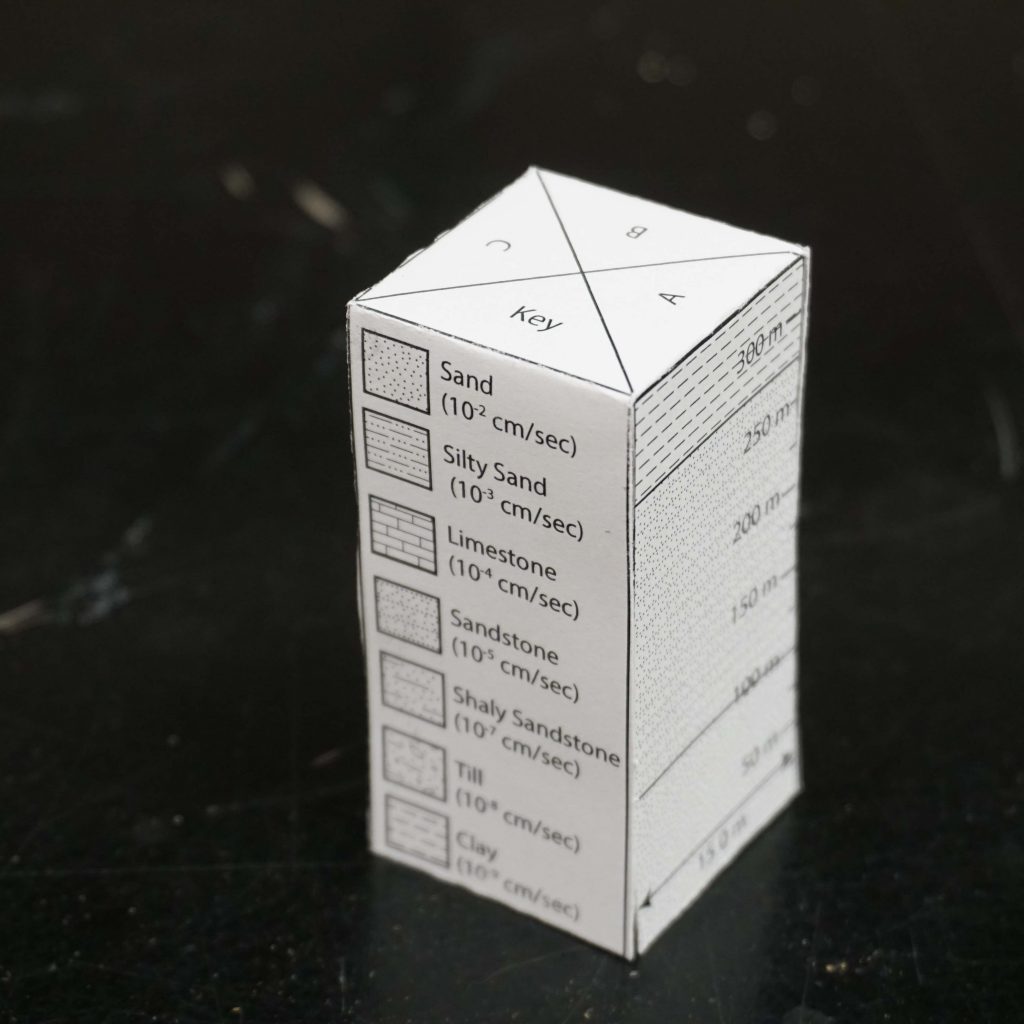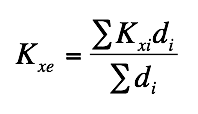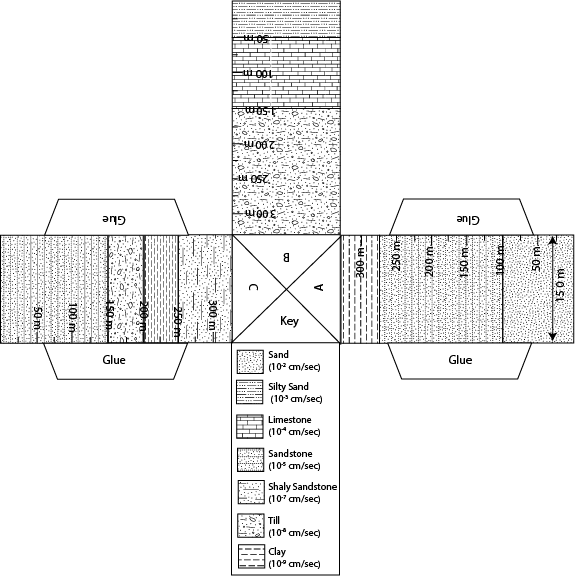
Objectives: Determine the effective hydraulic conductivity of a heterogeneous aquifer in the horizonal and vertical directions.
1. When aquifers are heterogenous there is a simplification that can sometimes be made in order to calculate a bulk or effective hydraulic conductivity across the whole aquifer. This assumption only works if water is flowing parallel or perpendicular to the bedding planes (see figure below). When these conditions are met, it is possible to then calculate an effective hydraulic conductivity where the hydraulic conductivity of an individual layer is weighted based on the layer thickness. Then each of the products of layers and thickness are summed. The equations used to calculate this effective hydraulic conductivity are given below. Using the foldable aquifer model address the following problems.

For groundwater flow parallel to the bedding plane.

Where
Kxi is the hydraulic conductivity of a layer i in the x direction
di is the thickness of layer i
For groundwater flow perpendicular to the bedding plane.

Where
Kxi is the hydraulic conductivity of a layer i in the z direction
di is the thickness of layer i
A. Determine effective hydraulic conductivity for horizontal flow in aquifers A, B, and C.
B. Determine effective hydraulic conductivity for vertical flow in aquifers A, B, and C.
C. Explain why the effective hydraulic conductivity is different when flow is in the horizontal directions as compared to when flow is in the vertical direction.


This work is licensed under a Creative Commons Attribution-NonCommercial 4.0 International License.
